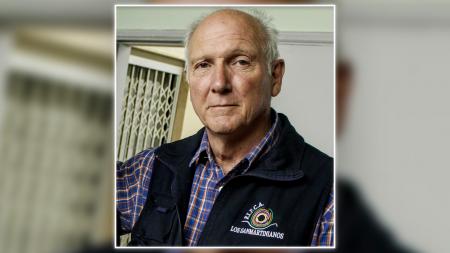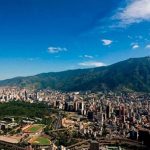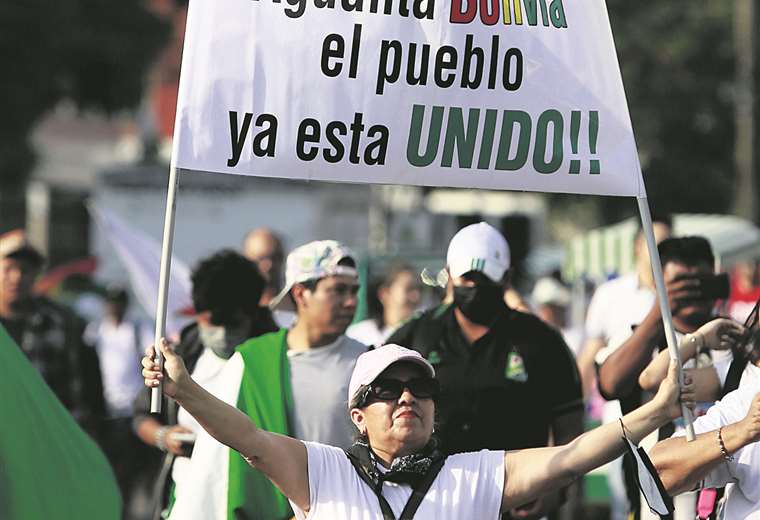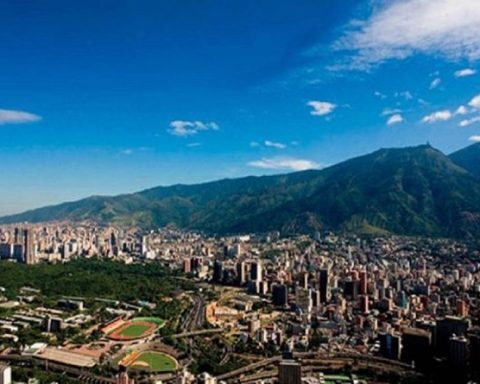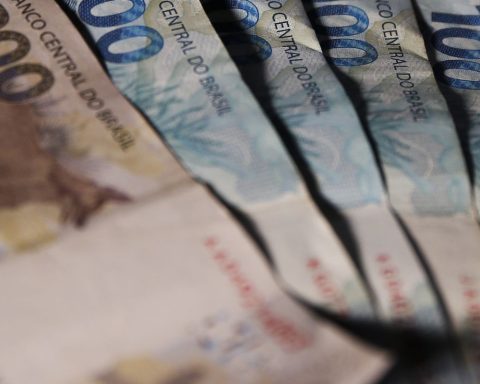Fifty years ago, a young midshipman led an uprising of non-commissioned officers and Navy soldiers who decided to take over the ESMA and leave that navy unit in trucks for the Buenos Aires town of Lomas de Zamora, where they planned to resist any attempt by the military dictatorship of Alejandro Agustín Lanusse to prevent the return of Juan Domingo Perón, who was on a flight to Argentina after having spent 17 years in exile.
“It was a way of showing that there were other Armed Forces. We were young soldiers who were consubstantiated with the popular struggles that were taking place in those years and we refused to repress,” Julio César Urien said in dialogue with Télam.who, when he was a young 22-year-old officer, led a rebellion in 1972 at the heart of one of the most anti-Peronist institutions in the country.
After entering the Navy as a cadet in 1968, Urien graduated as a naval officer at the end of 1971 and was assigned to the 2nd Marine Infantry Battalion (BIM) based at the Puerto Belgrano base, near Bahía Blanca.
Those were times of great social and political mobilization, and that climate had also spread to the ranks of the Armed Forces.
“With several of my classmates we felt identified with the ideas of Peronism, and we wanted a social and political change to leave behind that dictatorship that prevented popular expression,” recalled Urien.
Julio César was a member of class 100 of Navy officers and graduated from the naval school with officers such as Alfredo Astiz and Ricardo Cavallo, two genocidal individuals who would form part of Task Group 3.3.2 that would operate at ESMA during the last civic-military dictatorship.
After discharge, the midshipmen of the Urien promotion were assigned to different naval bases, but those who maintained an identification with Peronism continued in contact and established links with soldiers from other arms.
After the execution of political militants at the base of Almirante Pedro Zar in Trelew, in August 1972, the Navy decided to mobilize part of BIM 2 from Puerto Belgrano to ESMA and form task forces that would be ready for eventual repression, in a context in which Perón’s return to Argentina was imminent.
“When we graduated, we came into contact with non-commissioned officers and soldiers who were Peronists, and the idea of making an uprising if Perón’s return was prevented began taking shape among all of us, there at ESMA,” Urien said.
Shortly before Perón’s arrival in the country, the Naval Intelligence Service obtained information about a possible uprising.
“With several of my classmates we felt identified with the ideas of Peronism, and we wanted a social and political change to leave behind that dictatorship that prevented popular expression”
There were relays by the chiefs, changes of the guard, and some soldiers who were identified with Peronism were arrested and interrogated about whether they knew anything about an uprising.
The NCOs and Dragoons responding to Urien decided they couldn’t wait any longer. Either they rebelled or they were arrested.
On the night of November 16, they prepared to take the ESMA guard, but Urien was captured beforehand by a captain named Iribarne who transferred him to the officers’ casino..
However, the uprising continued and shortly after the guard was taken over by some 200 troops who managed to capture Iribarne as a prisoner and reduce several officers.

Without luck, they tried to rescue Urien, who was detained in the casino, but, faced with the resistance of the sailors to hand them over, they decided to continue and leave the ESMA in trucks, jeeps and buses towards the Lomas de Zamora square, where they would entrench themselves. waiting for the return of Perón.
Identified with light blue and white ribbons, the mutineers left at dawn, while Perón with his entourage flew to Argentina, they went in a convoy through General Paz and even dared to sing the march.
The Navy, the weapon that had most opposed Perón, which had bombed Plaza de Mayo to overthrow him and shot political militants four months earlier, was witnessing a rebellion within its ranks on behalf of the political leader who was considered a tyrant by his high officialdom.
The idea was to get in touch with Montoneros, but communications failed and rumors of all kinds about the rebellious battalion also spread during those hours.
It was even said that it was a unit that was under the orders of Admiral Isaac Rojas was preparing to arrest and assassinate Perón.
In the Plaza, the mutineers were surrounded by troops from the Army tank battalion that had a seat in Azul, which had been displaced to Buenos Aires amid the tension that the return of the leader originated in the popular sectors.
“There was no possibility of coordinating anything. In that Army unit there were people who thought like us, but at that moment I didn’t know what we wanted. I think that if I had left ESMA I would have entrenched myself with the men from the Battalion and would have negotiated a surrender asking Perón to intervene”Urien argued.
Surrounded, the non-commissioned officers commissioned Iribarne to negotiate a surrender. Some managed to escape and go into hiding, a condition in which they were captured.
Urien was transferred to the Magdalena prison, where one day he was visited by a naval officer who left him a clear and fearsome warning.
“Look, you want a revolution. Know that this is not going to happen. The Navy is going to prevent it and if it has to kill a million people to do it, it will do it,” the officer told him in a clear warning of the times that were coming, he remembered.
In March 1973 there were elections and, on May 25 of that year, shortly after Héctor Cámpora took office as president, a general amnesty was decreed that also benefited all the ESMA rebels.
However, they could not recover their military ranks and in 1974, by order of the government of Isabel Perón, they were discharged from the Navy.
Urien joined the Montoneros and was arrested in May 1975 and was imprisoned until 1983.in various jails across the country.
Despite being legalized, the military put him on the so-called “death row”, where the political prisoners who would be executed in retaliation if the armed organizations took any action were located.
In 2005, Urien regained his military status and was given back two grades. and retired as a Navy frigate lieutenant.
Nowadays, heads the Interactive Foundation for the Promotion of Water Culture (Fipca) and is actively involved in defending access to Lago Escondido, on land occupied by British magnate Joe Lewis.
In March of this year, President Alberto Fernández decreed the reinstatement of another ten non-commissioned officers who had been discharged from the force, as a way of closing one of the lesser-known chapters of the struggles that took place in the 1970s.
